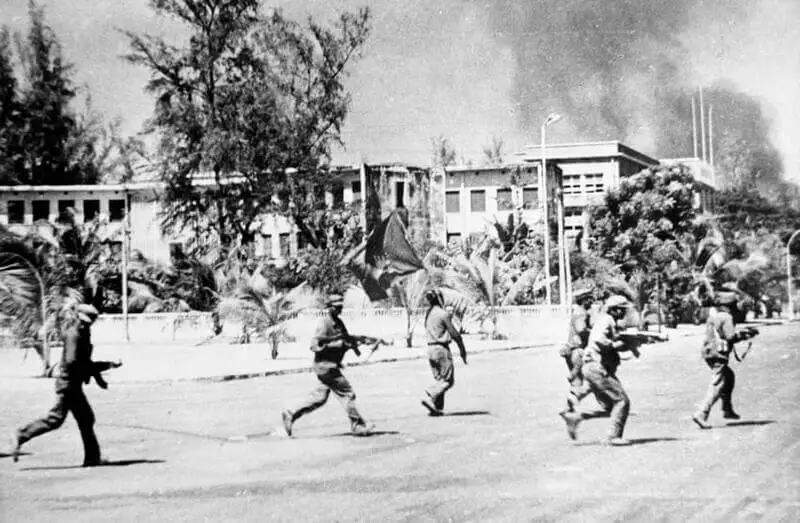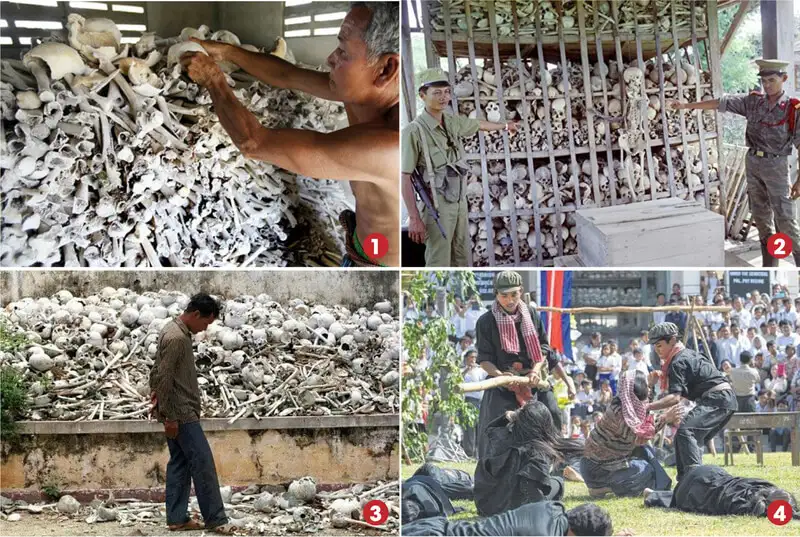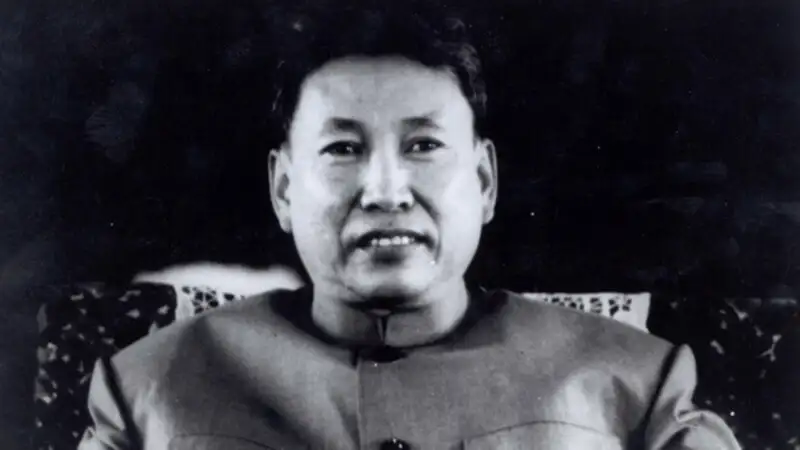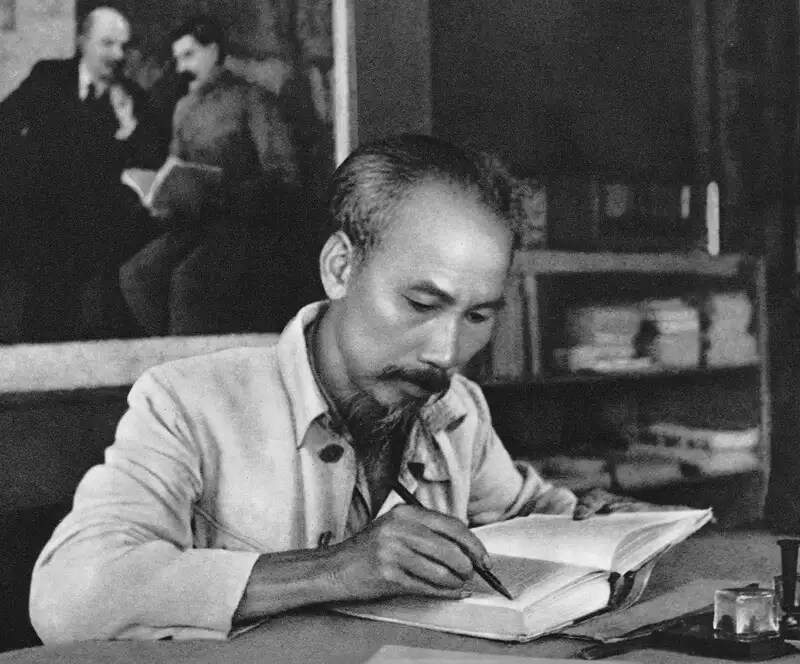The Khmer Rouge regime, under the leadership of the Marxist dictator Pol Pot, governed Cambodia from 1975 to 1979. Pol Pot’s ambition to establish a “superior race” in Cambodia through extreme social reform policies resulted in the deaths of over 2 million people. These victims were either executed for being deemed enemies of the regime or perished due to starvation, disease, or exhaustion from forced labor. This dark chapter in history, vividly depicted in the renowned film The Killing Fields, has been recognized as a genocide in Cambodia.
Pol Pot and the Rise of the Khmer Rouge
Although Pol Pot and the Khmer Rouge only seized power in the mid-1970s, their rise traces back to the 1960s, when communist insurgencies first emerged in Cambodia, then still under monarchical rule.
During the 1960s, the Khmer Rouge operated as the armed wing of the Communist Party of Kampuchea, their official name for Cambodia. The group was primarily active in the dense jungles and remote mountainous regions of northeastern Cambodia, near the border with Vietnam, which was embroiled in its own civil war. At that time, the Khmer Rouge lacked significant support from the Cambodian populace, particularly in urban areas like the capital, Phnom Penh.
In 1970, a military coup overthrew King Norodom Sihanouk. Following this event, the Khmer Rouge allied with the deposed king, forming a political coalition. Leveraging the widespread urban support for Sihanouk, the Khmer Rouge gradually gained the trust of the population.
Over the next five years, Cambodia descended into civil war between the right-wing military, which had led the coup, and supporters of the coalition between King Norodom and the Khmer Rouge. During this conflict, the Khmer Rouge steadily gained the upper hand by controlling increasing swathes of rural territory.
In 1975, the Khmer Rouge marched into Phnom Penh and seized control of the capital. With this victory, they won the civil war and assumed total control of the country.
Notably, the Khmer Rouge did not restore power to King Norodom but instead handed leadership to their commander, Pol Pot. The king was forced into exile.

Kampuchea: Pol Pot and the Khmer Rouge’s Vision
As the leader of the Khmer Rouge during its insurgent days, Pol Pot admired the rural tribes of northeastern Cambodia. He believed these tribes exemplified an ideal society—self-sufficient, united, and sharing the fruits of their labor, untainted by money, wealth, or religion, particularly the Buddhism prevalent in Cambodia’s cities.
When the Khmer Rouge took power and renamed the country Kampuchea, Pol Pot swiftly set out to reshape the nation in the image of these rural tribes, aiming to create an agrarian “communist paradise.”
In 1975, Pol Pot declared it “Year Zero” for Kampuchea, signaling the start of a new era. The new regime severed ties with the international community, forcibly relocated hundreds of thousands of urban residents to agricultural communes, abolished currency, and banned private property ownership and religious practices.
These actions not only upended societal life but also unleashed devastating consequences, plunging the country into the most tragic period of its history.

The Cambodian Genocide: Tragedy Under the Khmer Rouge
The agricultural communes established by Pol Pot quickly became hell on earth. Workers endured backbreaking labor, starvation, and brutal living conditions. Hundreds of thousands died from disease, hunger, or severe injuries caused by relentless work and abuse from ruthless Khmer Rouge guards.
Pol Pot’s regime also carried out mass executions targeting those labeled as “enemies of the state.” Intellectuals or anyone suspected of potential revolutionary leadership were put to death. Even wearing glasses or speaking a foreign language could lead to a death sentence.
In particular, hundreds of thousands of Cambodia’s middle class and intellectuals were tortured and executed in specialized detention centers across cities. The most infamous was Tuol Sleng prison in Phnom Penh, where nearly 17,000 people were held during the regime’s four-year rule.
During what is known as the Cambodian Genocide, an estimated 1.7 to 2.2 million Cambodians perished under Pol Pot’s regime, marking one of the bloodiest tragedies in human history.

The Fall of Pol Pot
In 1979, Vietnamese forces invaded Cambodia and overthrew the Khmer Rouge following violent border clashes between the two nations. Prior to this, Pol Pot had attempted to extend his influence into unified Vietnam but was swiftly repelled.
After the invasion, Pol Pot and Khmer Rouge fighters retreated to remote areas and continued operating as a diminished insurgent movement. Throughout the 1980s, Vietnam maintained a military presence in Cambodia, despite opposition from the United States.
Since the collapse of the Khmer Rouge regime, Cambodia has gradually reestablished ties with the international community, though it continues to grapple with challenges like poverty and illiteracy. In 1993, Prince Norodom returned to lead Cambodia as a constitutional monarch.
Pol Pot lived in hiding in northeastern Cambodia until 1997, when he was tried by the Khmer Rouge for crimes against the state. However, the trial is widely regarded as a formality. Pol Pot died under house arrest in a remote jungle home.
The stories of the suffering endured by Cambodians under Pol Pot and the Khmer Rouge have captured global attention. The 1984 film The Killing Fields, based on Sydney Schanberg’s book The Death and Life of Dith Pran, documented these atrocities and remains a haunting reminder of this history.

Conclusion
Through this article, Pywar hopes to provide a comprehensive view of the atrocities committed by the Khmer Rouge under Pol Pot’s leadership—one of the darkest periods in Cambodian history. Over 2 million innocent people endured forced labor, starvation, and brutal executions, leaving a profound lesson about the cruelty of extremism. Pywar believes that remembering and learning from the past will help build a peaceful, humane world free from such tragedies.
Translated by: Le Tuan
Source: history.com – Khmer Rouge



